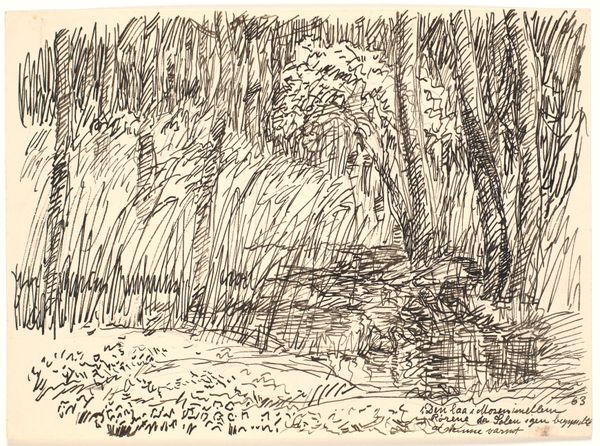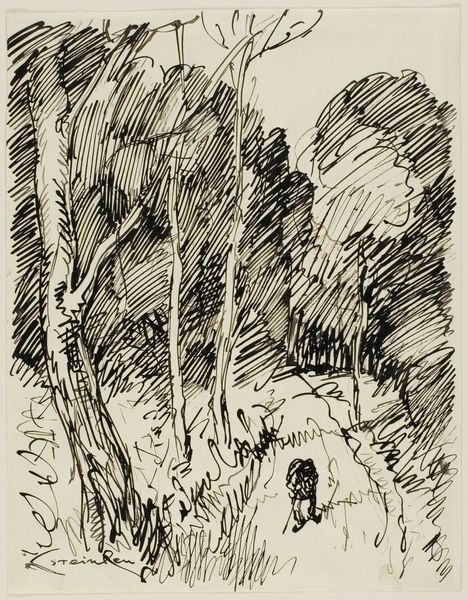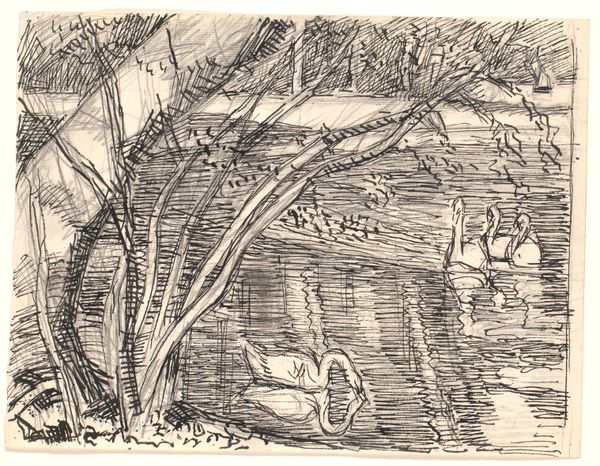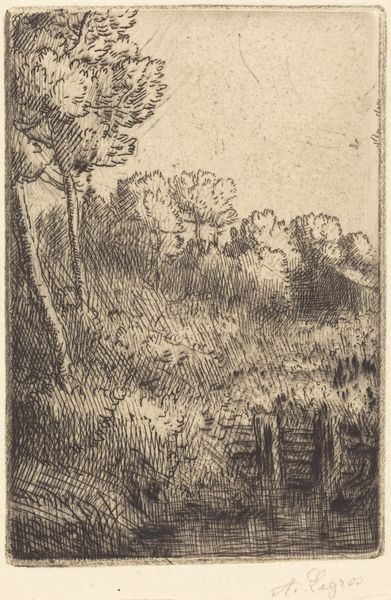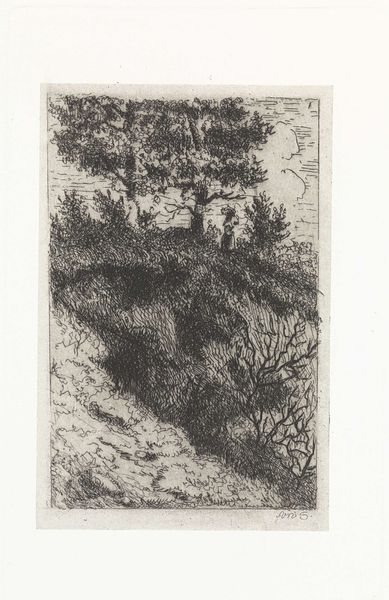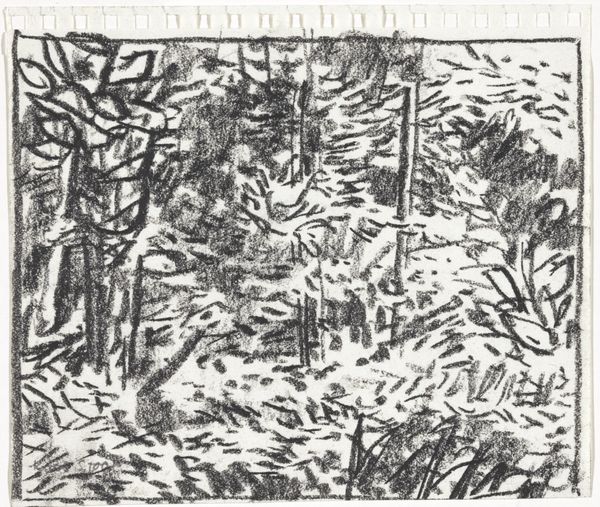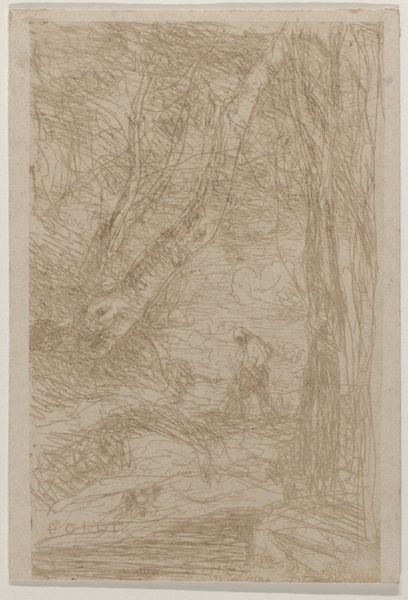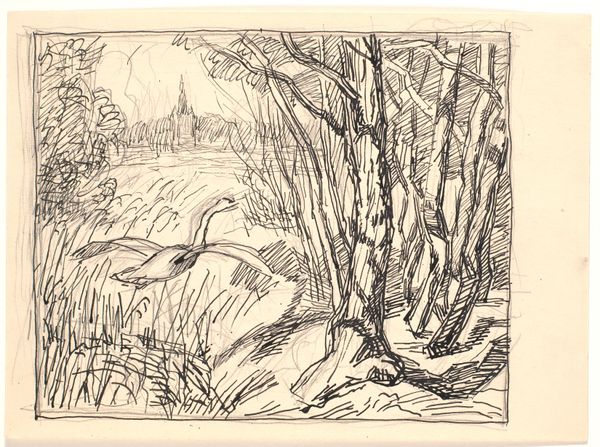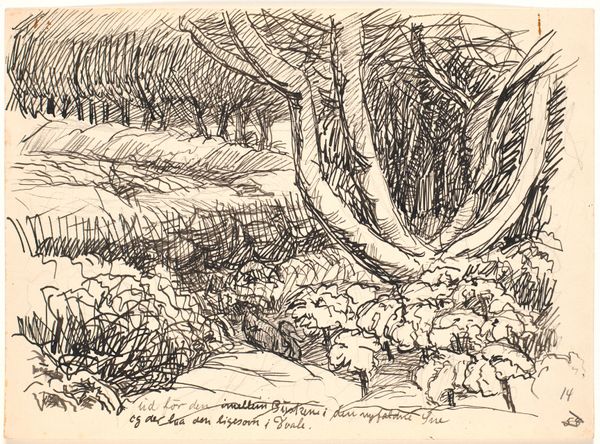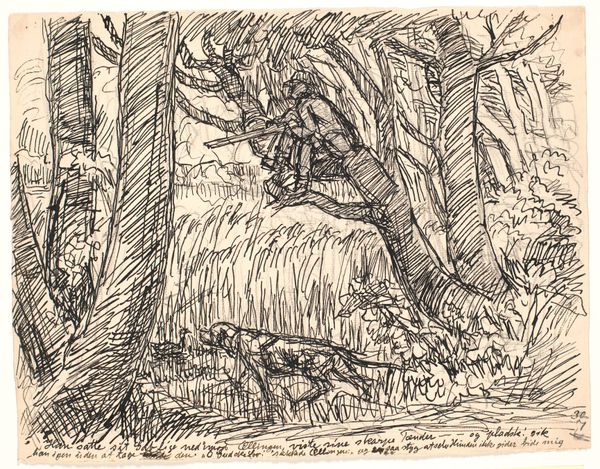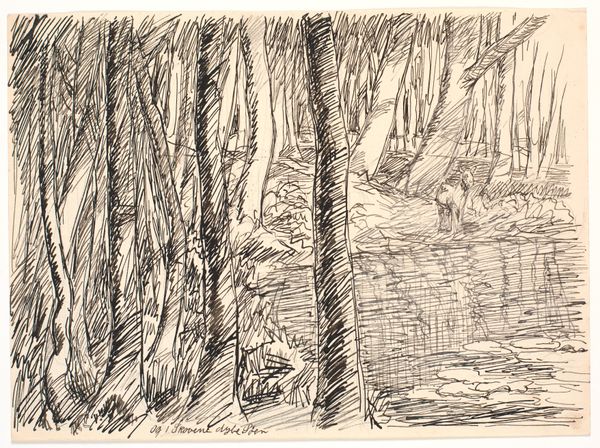
drawing, photography, ink
#
drawing
#
landscape
#
photography
#
ink
#
france
#
realism
Dimensions: 12.5 × 11 cm
Copyright: Public Domain
Editor: So, we're looking at Charles Nègre's "Le bûcheron," made sometime between 1857 and 1882. It’s a drawing, ink and photography, housed here at the Art Institute of Chicago. I'm struck by the sketchiness of it, the way the forest feels almost menacing, and then there’s this solitary figure of a woodcutter. How do you interpret this work in light of its historical moment? Curator: That sense of menace, I think, is key. Consider the mid-19th century: industrialization was rapidly transforming the French landscape and its rural labor force. Photography, also relatively new, offered a powerful way to document this changing world, to record both the grandeur of nature and the hardship of those who toiled within it. How might this image be seen as a political statement, then? Editor: Well, on one level it's realism, depicting the life of a woodcutter. But you're suggesting it's more than just a literal representation? Curator: Exactly. Nègre was deeply invested in the social realities of his time. Think about who controls the narrative. Before photography, how were rural laborers typically portrayed in art? Often idealized, right? Nègre’s image, with its raw, almost uncomfortable portrayal, shifts that dynamic. Is the woodcutter a hero, or a victim of circumstance? Editor: I see your point. The ambiguity challenges those traditional, romanticized views of rural life. The forest becomes less idyllic and more a site of struggle. I had not considered it this way. Curator: It prompts us to ask: Who has the power to represent whom, and to what end? Images, like this one, played a part in shaping public perception and influencing social discourse. Editor: That’s a powerful way to think about it. So it's not just about what the image shows, but also about the context and who gets to tell the story. I am truly getting a different point of view now. Thanks for making me think in a different way.
Comments
No comments
Be the first to comment and join the conversation on the ultimate creative platform.
